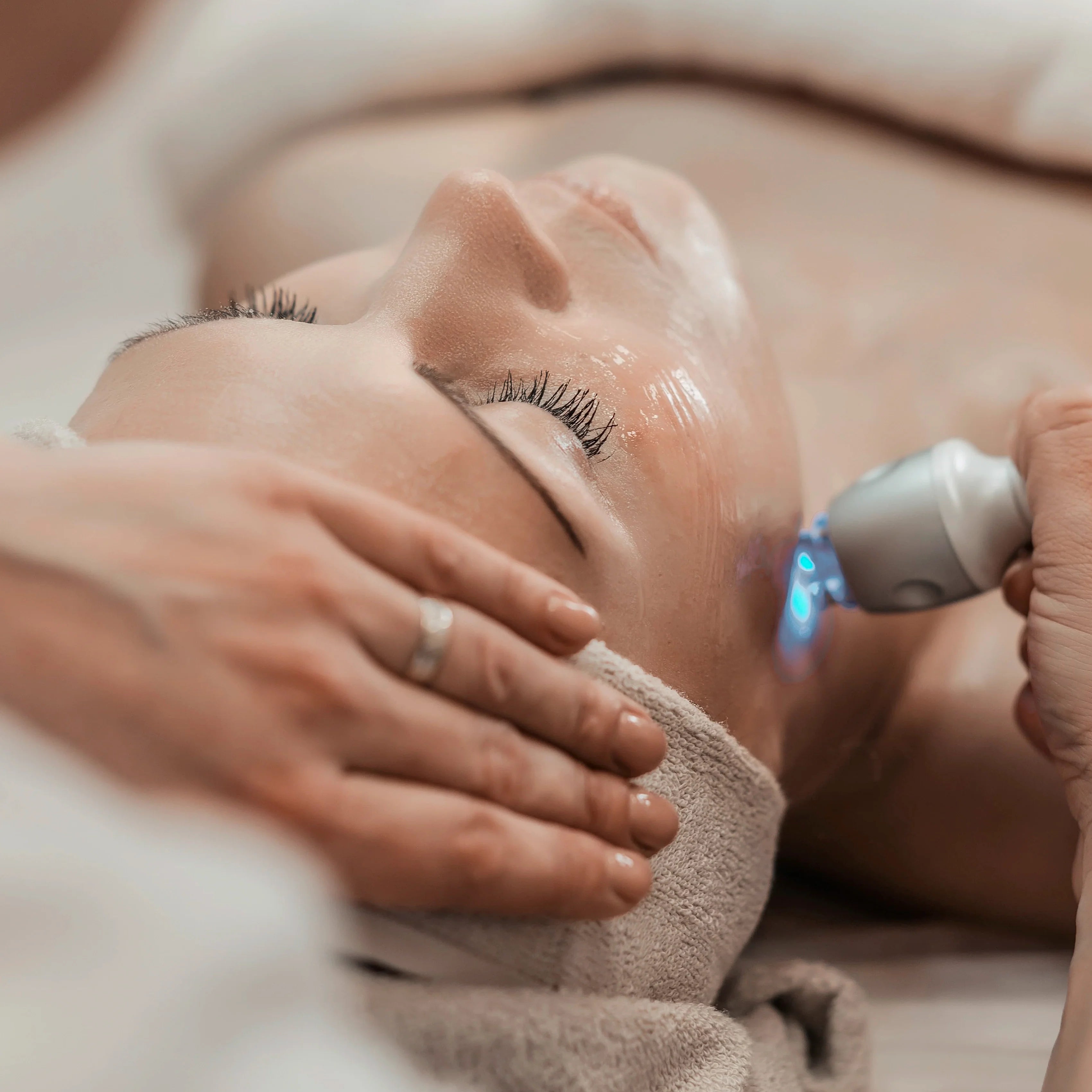Hydra Pen microneedling is the latest innovation in skincare that combines the traditional concept of microneedling with a serum-infusion system. Unlike standard microneedling devices, the Hydra Pen not only punctures the skin to stimulate collagen production but also delivers skin-loving serums directly into the dermis during the treatment.
This dual-action process accelerates skin regeneration and enhances the absorption of active ingredients for better results.
This treatment has become increasingly popular among South Africans looking for non-invasive, rejuvenating skin procedures. With minimal downtime and visible results after just a few sessions, Hydra Pen microneedling has emerged as a go-to solution for anyone wanting fresher, healthier-looking skin.
How It Differs from Traditional Microneedling
The main distinction lies in the delivery system. Traditional microneedling devices, like Dermapen or rollers, create micro-injuries but rely on the external application of serums afterwards. The Hydra Pen streamlines these steps by embedding a serum cartridge that dispenses the solution during the puncturing process.
More importantly, the added hydration from the serums can lessen the harshness of post-treatment irritation often experienced with standard microneedling. This makes Hydra Pen ideal for sensitive skin types and first-time users. Its gentle approach doesn’t sacrifice effectiveness, making it a perfect middle ground between intensive treatments and mild facials.
Benefits of Hydra Pen Microneedling
Skin Rejuvenation and Collagen Production
At its core, Hydra Pen microneedling is all about promoting the body’s natural healing process. When the tiny needles create micro-injuries in the skin, your body immediately kicks into repair mode. This process triggers an increase in collagen and elastin production—two essential proteins responsible for skin firmness and elasticity.
And let’s not forget hydration. The simultaneous serum infusion deeply moisturises the skin, leaving it soft and dewy. Living in South Africa's harsh, sun-exposed environments, this added moisture is truly transformative. Hydra Pen essentially delivers the hydration your skin desperately craves, right where it needs it the most.
Targeting Fine Lines, Wrinkles, and Acne Scars
If wrinkles, fine lines, or stubborn acne scars are your main concerns, Hydra Pen microneedling might be your best bet. Thanks to the depth control offered by the pen, your skincare provider can customise the treatment intensity according to your skin's issues. Shallow depths work well for boosting glow and reducing fine lines, while deeper settings target acne pits and wrinkles.
Regular sessions help break down scar tissue and rebuild skin structure. Over time, pitted scars fade, and your complexion appears more even and smooth. Although it's not a quick fix, the cumulative effects are remarkable.
Moreover, because the pen delivers potent ingredients like hyaluronic acid, peptides, or vitamin C directly into the dermis, it speeds up the healing and repair process. The result means quicker recovery and enhanced rejuvenation, something that traditional scar treatments often take months to deliver.
Factors Influencing Treatment Frequency
Skin Type and Condition
Not all skin is created equal. The frequency of Hydra Pen microneedling depends heavily on your unique skin type and condition. Oily or acne-prone skin may benefit from more frequent treatments initially—think every 2-3 weeks—especially if you're targeting active breakouts or scarring. Conversely, skin types that are sensitive or dry may require a longer recovery period between sessions, typically 4-6 weeks.
If you're treating hyperpigmentation, you'll likely be advised to schedule sessions more conservatively to prevent triggering further discolouration. Similarly, for rosacea or thin, reactive skin, spacing out treatments can help minimise irritation while still achieving results.
There is no universally applicable approach. Your skincare provider will assess your skin condition, hydration level, and sensitivity to tailor a plan that aligns with your goals and healing timeline.
Age and Skin Concerns
Age plays a massive role in how often you should book a Hydra Pen session. Younger individuals in their 20s and early 30s might only need treatments every couple of months as maintenance. Their collagen production is still relatively high, and the goal is typically prevention rather than correction.
For older individuals—especially those 40 and up—skin regeneration slows down considerably. This means more frequent sessions (every 3–4 weeks initially) may be needed to boost collagen and reduce visible ageing signs like fine lines, sagging, and age spots. Those battling deep acne scars or significant sun damage will also require a more aggressive schedule to see visible changes.
What's the good news? Even after just 2–3 sessions, most clients report improved skin texture and reduced pore size.
Lifestyle and Environmental Impact
Lifestyle and your surrounding environment matter more than you think. If you live in an urban South African city like Johannesburg or Cape Town, daily exposure to pollution and sun can take a serious toll on your skin. Smoking, alcohol consumption, poor diet, and lack of sleep also slow down skin regeneration, meaning more frequent treatments might be needed to maintain results.
So, if you’re asking, “How often should I do Hydra Pen microneedling?”—the honest answer is: it depends on you.
Recommended Frequency of Hydra Pen Microneedling
Dermatologists generally recommend Hydra Pen microneedling every 4 to 6 weeks for most skin types. This frequency allows enough time for the skin to heal and regenerate while keeping collagen production stimulated consistently.
Here’s a rough breakdown:
-
Mild issues (dryness, dullness): Every 6 weeks
-
Moderate issues (acne scars, pigmentation): Every 4 weeks
-
Severe issues (deep wrinkles, significant sun damage): Every 3–4 weeks initially, then maintenance every 6–8 weeks
Consistency is key. One session might give you a glow for a few days, but regular treatments are what lead to long-term skin transformation.
How Often is Too Often?
While the temptation to book weekly sessions is real (especially after seeing your post-treatment glow), doing Hydra Pen microneedling too often can do more harm than good. Over-microneedling may disrupt the skin barrier, leading to redness, inflammation, or even long-term sensitivity.
Think of it like working out. If you hit the gym every day without rest, your muscles won’t have time to recover—and you’ll burn out. Your skin needs downtime to build collagen, heal properly, and benefit from the last treatment before the next one.
Doing it more than once every 3 weeks, unless under strict professional guidance, is generally not advisable.
Comparing Hydra Pen with Other Skin Treatments
Hydra Pen vs. Dermapen
Both Hydra Pen and Dermapen are popular microneedling devices, but they differ in functionality and user experience. Dermapen uses a straightforward microneedling approach—it punctures the skin, and serums are applied afterwards. Hydra Pen, on the other hand, takes a step further by combining microneedling with a built-in serum delivery system. This dual functionality improves both efficiency and effectiveness.
Hydra Pen vs. Chemical Peels and Laser Treatments
Chemical peels and laser resurfacing are also top-tier skin rejuvenation treatments—but they come with more downtime and risks. Peels use acids to exfoliate the top layers of skin, while lasers use heat to target specific skin issues.
Hydra Pen microneedling doesn’t involve heat or chemicals, making it safer for sensitive or darker skin tones. It also boosts natural collagen production without forcing skin trauma. For people who want effective but gentle skin repair, Hydra Pen is often a better entry point than lasers or peels.
Plus, recovery from a Hydra Pen session is typically 1–3 days, compared to a week or more for medium–deep chemical peels or ablative laser customisation that’s hard to match.
They use FDA-approved devices and only high-quality serums tailored to individual skin concerns. Their thorough consultation process ensures that each client receives a treatment plan based on their skin type, lifestyle, and goals. Post-treatment support is also exceptional, with follow-up advice and product recommendations to help maintain results.
Additionally, Deluxe Laser & Aesthetics offers competitive pricing without compromising on safety or quality. For South Africans looking to invest in their skin long-term, it’s one of the most trusted and well-reviewed options.




